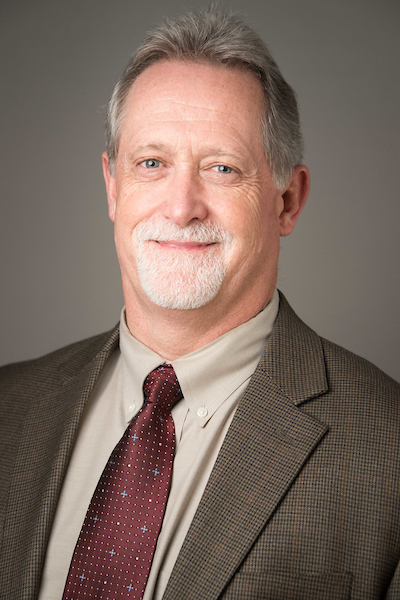Michael A. Whitt, PhD

Professor and Chair
858 Madison Ave.
601C Molecular Science Building
Memphis, TN 38163
mwhitt@uthsc.edu
Phone: 901.448.4634
Fax: 901.448.7360
Education
- PHD, 1987, University of California, Davis
- BS, 1981, University of Kansas
Research Interests
Rhabdovirus Assembly and the Development of VSV-Based Targeting Vectors
The research in my laboratory is directed towards understanding the requirements for the replication and assembly of an enveloped, nonsegmented negative-stranded RNA virus called vesicular stomatitis virus (VSV). VSV has proven to be a good model system for studying both virus replication and virus assembly because it is a relatively simple virus. It consists of a bullet-shaped virion composed of five viral proteins, a single molecule of negative-sense RNA, and a lipid envelope derived from the host cell plasma membrane which contains the envelope spike glycoprotein (Fig. 1). The glycoprotein (G protein) of VSV is responsible for the attachment and entry of VSV into a susceptible host cell and is therefore essential for virus infectivity.
To identify and dissect the signals required for the replication and assembly of VSV we are using a “reverse genetics” approach in which specific mutations can be introduced into the negative-sense RNA genome of this virus. Two different reverse genetic systems have been developed. One of these results in the replication and passaging of VSV miniviruses. The miniviruses require complementation of one or several VSV proteins, and have been useful in studies of VSV transcription. The other system allows the recovery of infectious VSV from full-length cDNA clones. With this system we have generated novel viruses that have been used to address questions of VSV entry and assembly.
One of major focus areas is the identification of glycoprotein domains that are involved in VSV entry and in the assembly of VSV particles. Our ultimate goal is to utilize this knowledge to develop genetically engineered VSV recombinants that can be used to specifically target damaged or diseased cells. By carefully manipulating the cell-specificity of these recombinant viruses, we believe that VSV could be developed into a potentially useful therapeutic agent to eliminate these cells in vivo. To develop cell-specific targeting vectors we need to understand more about the mechanism of VSV entry. Previously we had shown that several different single amino acid substitutions in a region of uncharged amino acids that are conserved in the glycoproteins from two VSV serotypes either greatly reduced, or abolished membrane fusion activity. Based on these data, we suggested that this region may constitute a putative G protein fusion domain. More recently we have found that a small region near the transmembrane domain can act as a membrane-fusion potentiator. Remarkably, this activity seems to be quite promiscuous and can enhance the fusion activity of a variety of heterologous viral fusion proteins. Understanding how this domain, as well as the previously defined VSV fusion domain, participates in the fusion reaction is one of our primary objectives.
To develop cell-specific targeting vectors we also need to understand the events that result in the release of virus particles from the plasma membrane of cells and the molecular basis for glycoprotein incorporation into virions. Using full-length cDNAs, we have generated recombinant viruses that encode either heterologous glycoproteins from other viruses, ones that encode cellular membrane proteins, or viruses that express chimeric proteins that contain specific regions of the VSV glycoprotein. Through the analysis of these recombinant viruses we have identified a domain in the membrane-proximal stem of G protein that enhances both virus budding from the cell surface, as well as glycoprotein incorporation. We now wish to determine precisely how this relatively small region of G protein participates in virus assembly and budding.
